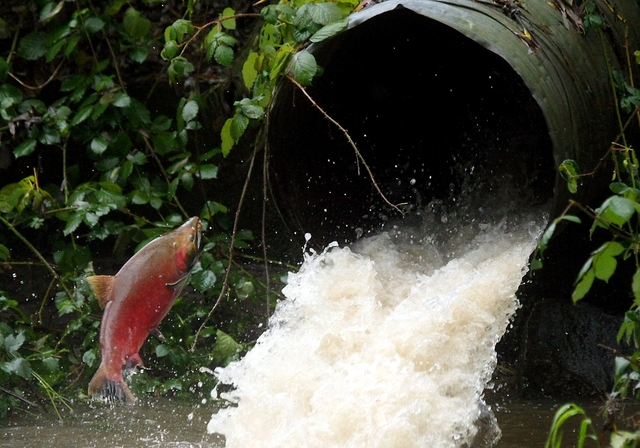forum
library
tutorial
contact

Costly Dam Removal Won't Fix
Puget Sound Salmon Needs
by Todd Myers
Everett Herald, November 2, 2021
|
the film forum library tutorial contact |

|
Costly Dam Removal Won't Fix
by Todd Myers
|
With salmon habitat restoration work going unfunded, removing dams is an expensive waste of effort.
 Just north of Everett, the Stillaguamish River includes a vital estuary important for chinook salmon populations in Puget Sound. Chinook in the Salish Sea are the most critical food source for the threatened Southern Resident killer whales.
Just north of Everett, the Stillaguamish River includes a vital estuary important for chinook salmon populations in Puget Sound. Chinook in the Salish Sea are the most critical food source for the threatened Southern Resident killer whales.
But a key project to restore the estuary went unfunded this year. This is particularly frustrating because the most recent State of the Sound Report notes that threatened chinook salmon in the Puget Sound are not recovering and have made little progress since they were listed as threatened in 1999.
As a member of the Puget Sound Salmon Recovery Council, I am even more frustrated by this lack of funding when so much political attention paid to destroying the four lower Snake River dams, where salmon populations are actually recovering. That misplaced focus takes attention, and funding, away from more urgent salmon recovery efforts. The result is a lose-lose-lose, for salmon, economic well-being and the climate.
Much of the public narrative about Snake River salmon is false. Some activists claim Snake River spring/summer chinook will be extinct in five years and predicted a population decline this year. They were badly wrong. The population increased by 27 percent, the second year of increase as part of a regular population cycle.
Those calling for dam destruction ignore the cycle and the positive trend, saying populations are below the 10-year average. This is true. That's how averages work. Five of every ten years during a cycle will be below average.
Additionally, the science points to another increase next year, pushing populations above the average of the 2010s, 2000s, and far above the average returns during the 1990s. I would like population increases to be more rapid, but unlike the Puget Sound, they are moving in the right direction.
Indeed, repeated scientific analyses show that destroying the Snake River dams would have only a marginal benefit for salmon. At the Lower Granite Dam, 98 percent of smolt successfully pass the dam. Spending tens of billions for tiny, theoretical improvements is irresponsible.
Some claim destroying the dams would be good for the economy, citing a study by ECONorthwest. The author of that study is a friend and while I disagree with his conclusions, he is sincere. But that study is from 2019, and the report estimates the cost of destroying the dams at $4.3 billion. Today's cost estimate is many times that amount: $33.5 billion. Using the updated costs puts the cost of destroying at a loss of $20.55 billion.
There are other problems with the study. The vast majority of projected benefits are speculative, including an assumption that people in Los Angeles will travel to Lyons Ferry to go fishing. Having worked in environmental policy for two decades, I have seen many such claims that recreation would increase total economic benefits. I have never seen one of them that was accurate.
That isn't the end of the costs, however.
The four dams generate about 7 percent of Washington's electricity, more than all the state's wind turbines and solar panels combined. Even the NW Energy Coalition, which advocates dam destruction, admits that destroying the dams and replacing them with wind and solar would increase ratepayer costs, reduce electricity supply, and increase carbon dioxide emissions. They also admit that replacement energy would be built in Montana and Idaho. Washington residents would suffer from the loss from the dams, and Idaho and Montana would receive the economic benefit of replacing them.
Destroying the dams would come at a time when our electrical grid already has a shortage of generation. The NW Power and Conservation Council reports the risk of energy shortages, and Texas-style blackouts, is already above an acceptable levels and increases dramatically over the next few years. Destroying dams when we already have a shortage is foolhardy.
Puget Sound chinook, the primary food source for Southern Resident orca, are not recovering. Projects are going unfunded. Destroying the dams would cost the equivalent of 335 years of Washington's current salmon recovery spending, in return for marginal benefit. Given the flimsy justifications for destroying the dams, those who truly care about salmon recovery should turn their attention to the Puget Sound, where the need is greatest and funding is inadequate.
Related Pages:
Rep. Newhouse, Dams in Your District are Doing Damage to Mine by Rep. Mike Simpson, Everett Herald, 5/29/21
learn more on topics covered in the film
see the video
read the script
learn the songs
discussion forum
